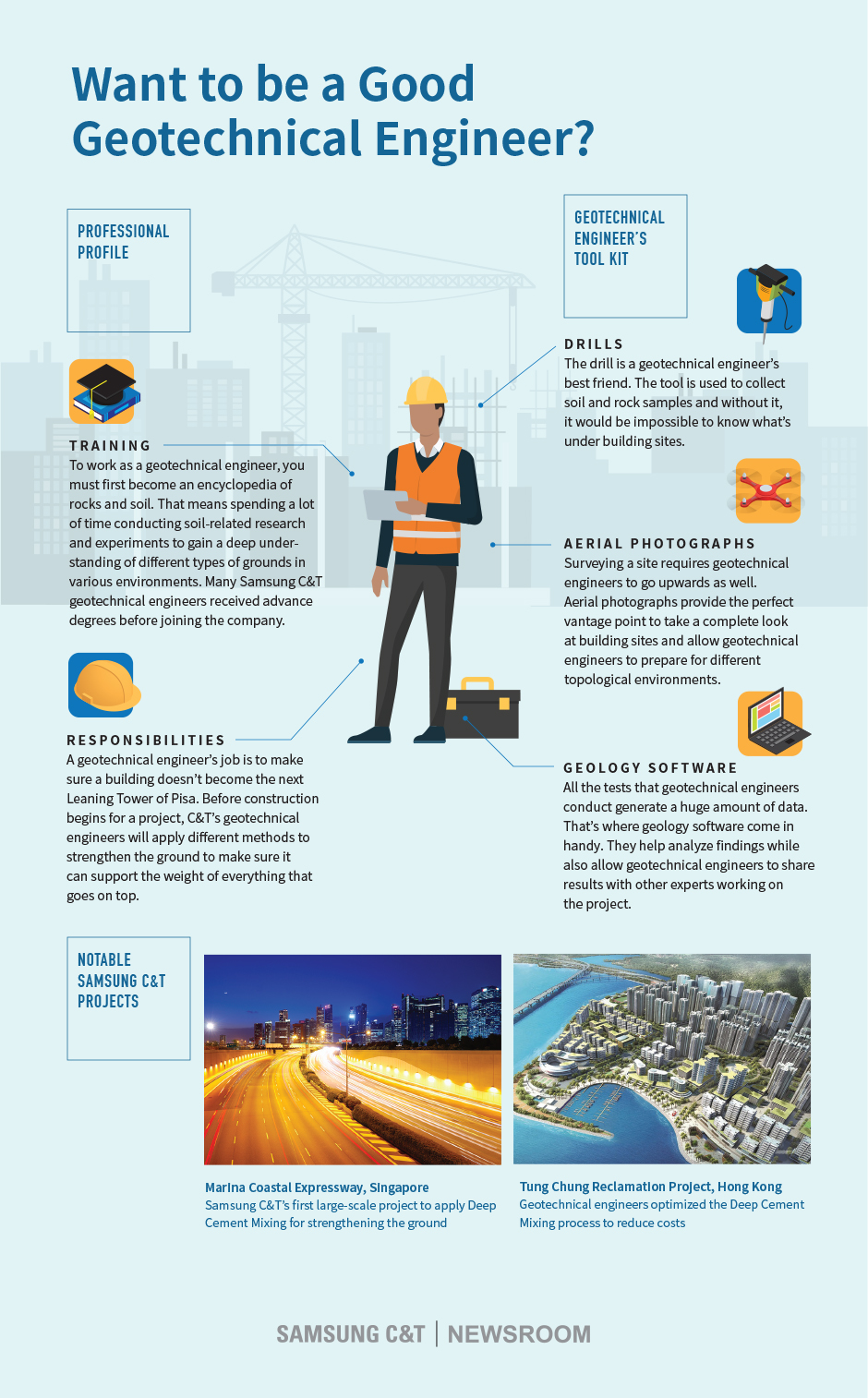Geotheta Can Be Fun For Everyone
Geotheta Can Be Fun For Everyone
Blog Article
Rumored Buzz on Geotheta
Table of ContentsHow Geotheta can Save You Time, Stress, and Money.Geotheta for DummiesGeotheta Things To Know Before You Get ThisGeotheta Fundamentals Explained
They work together with civil engineers, architectural designers, architects, and other specialists to incorporate geotechnical factors to consider right into the overall project design and building procedure. This needs effective synergy, sychronisation, and communication to make sure that the geotechnical elements align with the project objectives and satisfy governing requirements.Mining & Materials Engineering: Principles of drilling, penetration rates, and factors impacting the choice of exploration technique. Characteristics of nitroglycerins, firing systems and blast patterns. Blowing up strategies in surface area and below ground workings. Special blasting methods at excavation boundaries. Resonance and noise control. Mechanical and continuous strategies to fragmentation, including longwall shearing and fullface boring.
Modelling of fragment and fragment size distributions; comminution as a transfer function. Comminution innovation: squashing, grinding, dimension category. Integrated evaluation of fragmentation and comminution procedures. Supplied by: Mining & Materials Engineering.
Geotheta for Dummies
Bachelor's degree programs in civil, geotechnical, geological, and ecological engineering generally last 4 years and include general education and learning programs in English, social scientific research, and the humanities, as well as training courses in advanced mathematics, structural geology, and liquid mineralogy. (https://telegra.ph/Why-Geotheta-is-Your-Go-To-for-Geotechnical-Engineers-in-South-Africa-08-02)
Geotechnical design entails the analysis of the dirt and rock problems at a particular site, and their ramifications for the development of that website. As many frameworks count on the ground for support, it lacks surprise that a comprehensive understanding of the ground conditions, and the viability of structure systems, are crucial to the long-lasting security and performance of the building or framework.
Being experts in the investigation of geological formations and ground practices, geotechnical engineers execute clinical examinations and screening to comprehend the effect these geological developments might have on the style and building and construction of structure, civil and infrastructure jobs. This knowledge is essential for the design and building of structures, roadways, passages, dams, bridges, and water supply and sewer system.
The geotechnical team at Douglas Allies routinely talk to designers, design designers, designers, and contractors to make referrals on style and growth proposals to make certain that the developed structures are suitably designed for the ground conditions. As an example, the style of footing systems needs to take into consideration the weight of the structure, the capability of the ground to support that weight with each other with activity resistances and efficient construction.
Geotheta Fundamentals Explained
This task is substantially streamlined by the usage of our Douglas Map geospatial platform which makes this details conveniently obtainable in a very easy to use web browser interface. A geotechnical designer will guide the exploration of boreholes and examination pits to collect dirt and other examples, and additionally examine surface features and ground exposures to develop a geotechnical model of the subsurface problems.
Depending upon the task kind and ground conditions encountered, lab testing might to name a few points analyze stamina, compressibility, reactivity and/or permeability of dirt and rock samples. Hereafter data is gathered and looked at, the results are used for a geotechnical version of the website, which is usually presented as sections throughout the website.

A geotechnical examination by nature can only analyze the ground conditions at the places pierced or dug deep into. All-natural variations in soil and rock conditions can happen across a site and in between test places. It is for that reason great practice that the geotechnical engineer be maintained throughout construction of the job to provide on-site verification that the ground problems experienced follow the expectations and advice offered in the geotechnical investigation report.
Geotheta Things To Know Before You Buy
Geotechnical designers use their comprehensive knowledge of dirt and rock to assess risk and resolve problems on diverse framework projectsGeotechnical engineering is a specialist branch of civil design which looks at the behaviour of planet products and the application of soil and rock auto mechanics. Consulting Engineers. As a geotechnical engineer, you will certainly examine the physical, mechanical and chemical residential properties of dirt and rock in order to design foundations, preserving frameworks and earthworks
Geotechnical engineering is very closely linked to and overlaps with, both engineering geology and ground engineering - https://geotheta.blog.ss-blog.jp/2024-08-02?1722614750. It's feasible to specialise in geotechnics or help a geotechnical firm but be referred to as a design rock hound or a ground engineer. As a geotechnical designer, you'll require to: construct and keep connections with customers and various other specialists entailed in the website, throughout each projectmaintain security requirements on site bear in mind expense ramifications when you make recommendationsstudy geological maps and airborne pictures from a series of resources and from different time periodsexamine construction intends to see just how practical they are based visit this site right here upon your understanding of the siteinvestigate threats or geological threats for the sitesearch for eco delicate functions, such as land fill beginning to develop valid and interpretive ground modelsplan field investigationsdrill and evaluate examples of bedrock, dirt, groundwater and extra products oversee other professionals on sitesolve technical problems as they occur, such as unanticipated structures at drill sitesmonitor problems throughout and after building and construction to make sure structures are secure in the brief and long termadding information gathered on website to your initial researchcreating geotechnical estimations, illustrations, and 2 or three-dimensional computer designs analyzing the datamaking referrals regarding the proposed use the website

Report this page